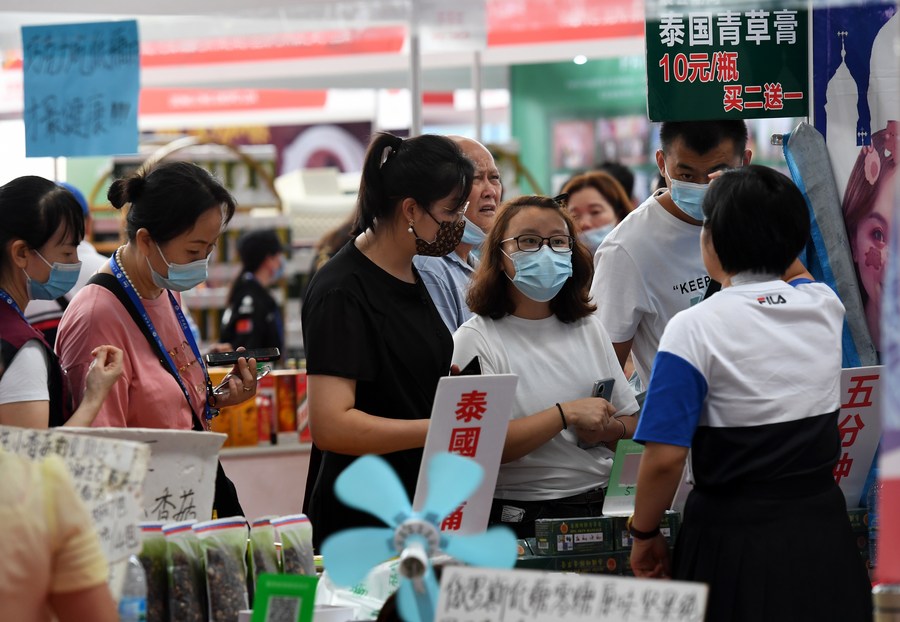
People select goods at the 18th China-ASEAN Expo in Nanning, capital of south China's Guangxi Zhuang Autonomous Region, Sept. 13, 2021. (Xinhua/Lu Boan)
HAINAN, May 30 (Xinhua) -- The Regional Comprehensive Economic Partnership (RCEP) agreement is expected to boost the cooperation between China and the member states of the Association of Southeast Asian Nations (ASEAN), according to officials and experts.
Speaking at the Media & Think Tank Forum held in South China's Hainan, Chi Fulin, head of the Hainan-based China Institute for Reform and Development, said that economic complementarity between China and the ASEAN countries has continued to rise.
Data showed that in the first quarter of this year, trade between China and ASEAN accounted for 47.2 percent or nearly half of China's foreign trade with RCEP partners. In 2020, ASEAN and China became each other's largest trading partners.
The enforcement of RCEP will further deepen the integration of the two energetic markets with great potentials, Chi said.
Under the RCEP framework, China will open its door wider to the ASEAN countries, thus injecting greater impetus into the region, said Xia Deren, deputy director of the economic committee of the Chinese People's Political Consultative Conference National Committee, citing China's headway in promoting cooperation with these countries in spheres including agriculture and transportation.
Stressing the importance of RCEP in strengthening the supply chain cooperation between China and ASEAN countries, Zhao Jinping, former head of the Development Research Center of the State Council, called for efforts to accelerate regional economic integration, broaden investment space and speed up the digitalization of the trade and investment activities.
The RCEP, the world's largest free trade deal to date, covers 10 member states of the ASEAN and its five free trade agreement partners, namely China, Japan, the Republic of Korea, Australia, and New Zealand.
The countries under the framework account for roughly 30 percent of the world's gross domestic product and population. Over 90 percent of trade in goods among approved member states will gradually be tariff-free.




 A single purchase
A single purchase









